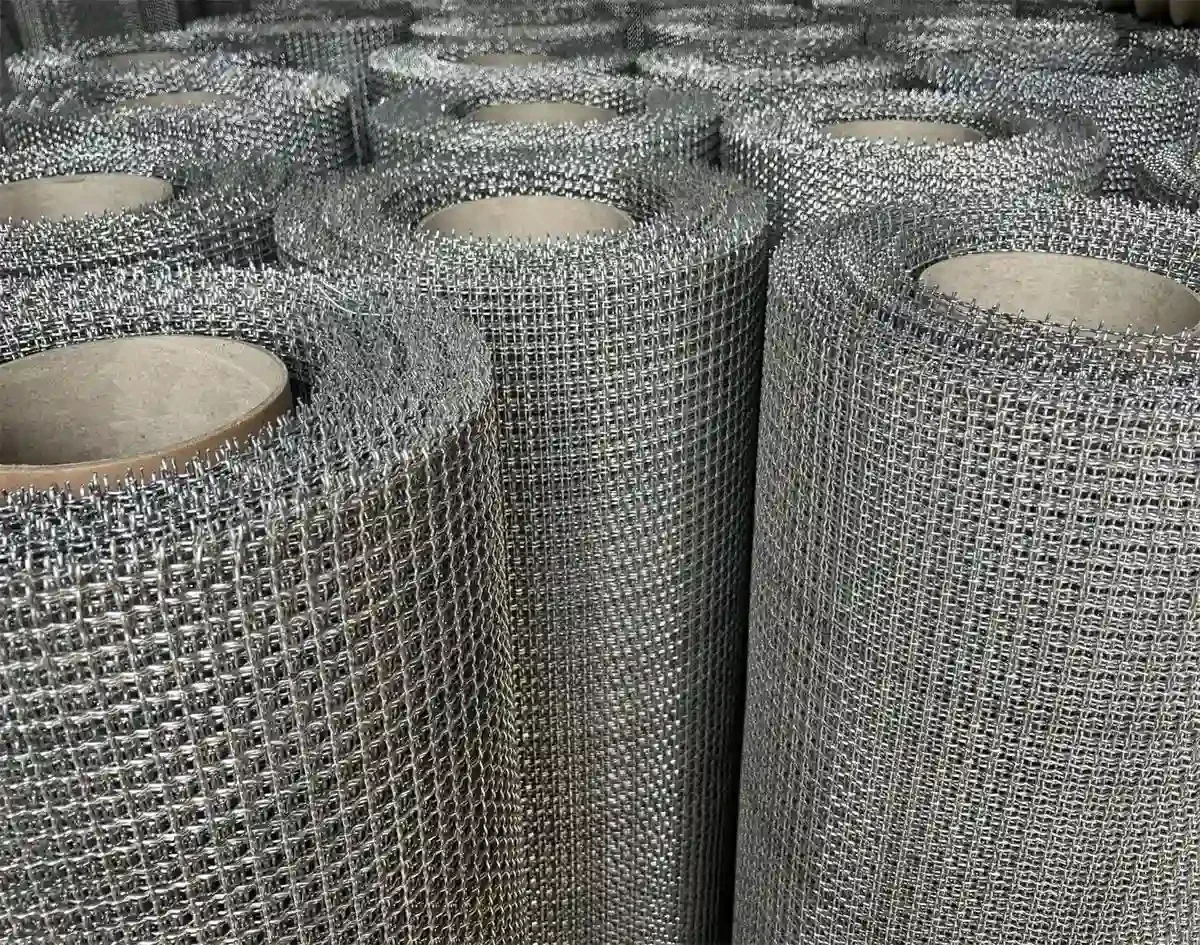When it comes to wire mesh, two popular options that often come to mind are crimped wire mesh and woven wire mesh. Both types of mesh have their own unique properties and applications. In this article, we will discuss the comparison between crimped wire mesh and woven wire mesh, exploring their differences in structure, strength, flexibility, and applications.
I. Construction
1.Crimped Wire Mesh:
Crimped wire mesh is made by weaving wires together in a crimped pattern. The wires are typically pre-crimped before being woven, creating a stable and rigid mesh structure. This crimping process involves bending the wire at regular intervals, forming a series of peaks and valleys across the mesh surface.
2.Woven Wire Mesh:
Woven wire mesh, on the other hand, is created by interweaving individual wires in a specific pattern. The weaving process can be done in various ways, such as plain weave, twill weave, or Dutch weave. This results in a mesh with a consistent and uniform appearance.

II. Strength and Durability
1.Crimped Wire Mesh:
Due to its crimped construction, crimped wire mesh offers excellent strength and durability. The crimped wires are securely locked together, providing resistance against bending and deformation. This makes crimped wire mesh suitable for applications that require high tensile strength and stability.
2.Woven Wire Mesh:
Woven wire mesh is also known for its strength and durability. The interlocking weave pattern creates a mesh that can withstand heavy loads and resist wear and tear. However, compared to crimped wire mesh, woven wire mesh may be slightly less rigid and more prone to deformation under extreme pressure.
III. Flexibility
1.Crimped Wire Mesh:
One of the advantages of crimped wire mesh is its flexibility. The crimped pattern allows the mesh to be easily bent and shaped without compromising its structural integrity. This flexibility makes crimped wire mesh ideal for applications that require curved or irregular shapes, such as architectural designs or decorative elements.
2.Woven Wire Mesh:
While woven wire mesh is generally less flexible than crimped wire mesh, it still offers a certain degree of flexibility. The interwoven wires can be manipulated to some extent, allowing for slight bending or shaping. However, woven wire mesh may not be as suitable for applications that require complex or intricate shapes.

IV. Applications
1.Crimped Wire Mesh:
Crimped wire mesh finds extensive use in various industries and applications. Its strength and stability make it suitable for heavy-duty applications, such as mining, construction, and agriculture. Crimped wire mesh is also commonly used in filtration systems, where its rigid structure helps to retain particles and provide efficient separation.
2.Woven Wire Mesh:
Woven wire mesh is widely utilized in a range of applications. Its versatility and uniform appearance make it popular in architectural designs, interior decorations, and window screens. Woven wire mesh is also commonly used in industrial filtration, sieving, and sorting processes, where its precise mesh openings allow for accurate particle separation.
Conclusion
In conclusion, both crimped wire mesh and woven wire mesh have their own distinct characteristics and applications. Crimped wire mesh offers excellent strength, rigidity, and flexibility, making it suitable for heavy-duty and curved applications. On the other hand, woven wire mesh provides strength, uniformity, and versatility, making it ideal for architectural and filtration applications. By understanding the differences between these two types of wire mesh, you can choose the one that best suits your specific needs and requirements.

